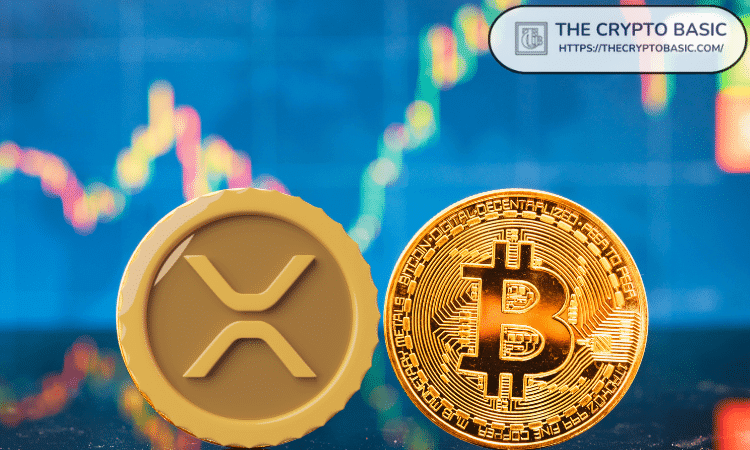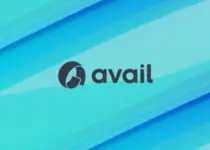Unveiling XRP: A Deep Dive into the Ripple Network’s Cryptocurrency
The realm of cryptocurrency is a labyrinth of innovation and complexity. Among its various denizens, XRP stands out as a token with a unique purpose – to bridge the gap between traditional finance and the decentralized world. This comprehensive analysis delves into the intricacies of XRP, exploring its technical underpinnings, functionalities, and potential future within the ever-evolving financial landscape.
Chapter 1: The Genesis of XRP – Ripple and its Vision
The story of XRP begins with Ripple, a company established in 2012 with a groundbreaking vision: to revolutionize the global payments system. Traditional cross-border transactions are often sluggish, riddled with fees, and lack transparency. Ripple’s answer? A decentralized network powered by the XRP token, designed to facilitate faster, cheaper, and more secure international payments.
Chapter 2: Unveiling the XRP Ledger – The Technological Backbone
XRP operates on its own blockchain, the XRP Ledger (XRPL), distinct from the more widely known Bitcoin blockchain. The XRPL boasts several advantages:
- Speed: Transactions on the XRPL settle in a mere 4-6 seconds, a stark contrast to the hours or days required by traditional systems.
- Scalability: The XRPL can handle a high volume of transactions efficiently, making it suitable for large-scale financial operations.
- Energy Efficiency: Unlike Bitcoin’s proof-of-work model, the XRPL utilizes a consensus mechanism called the Byzantine Fault Tolerance (Byzantine Generals Problem), which consumes significantly less energy.
Chapter 3: Decoding the Utility of XRP – Bridging the Financial Divide
XRP serves a critical role within the Ripple ecosystem. Here’s how it functions:
- Liquidity Provider: When a financial institution uses RippleNet (Ripple’s global network) to conduct a cross-border transaction, XRP acts as a liquidity bridge. The sending institution converts the sender’s currency into XRP, which is then sent to the receiving institution, where it’s converted back into the desired receiving currency. This eliminates the need for pre-funded accounts in various currencies, streamlining the process.
- Fractional Fees: Transactions on the XRP Ledger incur a minimal fee, a fraction of a penny. This fee is automatically destroyed, not distributed to miners, further reducing transaction costs.
Chapter 4: The XRP Ecosystem – A Network of Partnerships
Ripple has actively fostered partnerships with established financial institutions around the globe. These collaborations hold immense potential for widespread XRP adoption. Some key players involved include:
- Banks: Santander, Standard Chartered, Bank of America, and others are exploring RippleNet for faster and more cost-effective cross-border payments.
- Payment Processors: MoneyGram has partnered with Ripple to enable near-instant settlements for international money transfers.
Chapter 5: The XRP Market – A Look at Price Performance and Volatility
As with any cryptocurrency, XRP’s price fluctuates based on market sentiment, supply and demand dynamics, and regulatory developments. While XRP has experienced significant price surges in the past, it’s crucial to remember that the cryptocurrency market is inherently volatile.
Chapter 6: The Regulatory Landscape – Navigating Uncertain Waters
The regulatory environment surrounding cryptocurrency remains uncertain. Regulatory bodies worldwide are still grappling with how to classify and govern digital assets like XRP. This uncertainty can pose challenges for widespread adoption by financial institutions.
Chapter 7: The Future of XRP – Potential and Challenges
The potential benefits of XRP are undeniable. However, several challenges remain:
- Competition: Established players like SWIFT, the dominant player in cross-border payments, pose significant competition.
- Centralization Concerns: While the XRP Ledger itself is decentralized, Ripple holds a large percentage of XRP tokens, which raises concerns about centralization within the ecosystem.
Despite these challenges, Ripple’s ongoing efforts to establish partnerships and navigate the regulatory landscape offer a glimpse of hope for XRP’s future.
Chapter 8: Investing in XRP – Considerations and Risks
For those considering investing in XRP, a thorough understanding of the underlying technology, market dynamics, and regulatory landscape is paramount. Here are some key aspects to consider:
- Investment Thesis: Clearly define your investment goals and risk tolerance before venturing into the cryptocurrency market.
- Market Research: Conduct extensive research on XRP, the Ripple ecosystem, and the broader cryptocurrency landscape.
- Diversification: Diversify your investment portfolio to mitigate risk.
Investing in cryptocurrency is inherently speculative, and XRP is no exception.
Chapter 9: Conclusion – A Final Look at XRP’s Potential
XRP stands at a crossroads. Its utility within the RippleNet ecosystem offers a compelling value proposition. However, competition, regulatory uncertainty, and the inherent volatility of the cryptocurrency market present significant challenges. Whether XRP fulfills its potential as a transformative force in the global payments system remains to be seen.
Chapter 10: XRP in the Developer Landscape
- XRP Ledger (XRPL) Development Tools: Explore the developer tools and resources offered by Ripple to facilitate building applications on the XRPL. This includes the XRP Ledger Dev Portal, compilers, and libraries.
- Use Cases Beyond Payments: While RippleNet focuses on payments, discuss the potential for XRP and the XRPL to be used in other applications, such as supply chain management, trade finance, and loyalty programs.
Chapter 11: The Security of XRP and the XRPL
- Consensus Mechanism: Provide a more detailed explanation of the Byzantine Fault Tolerance (BFT) consensus mechanism used by the XRPL and how it ensures security and data integrity.
- Security Risks and Mitigations: Discuss potential security vulnerabilities within the XRP ecosystem, such as wallet hacks and phishing attacks. Explore the security measures implemented by Ripple and best practices for users to safeguard their XRP holdings.
Chapter 12: The SEC Lawsuit and its Impact on XRP
- Background of the Lawsuit: Briefly explain the ongoing lawsuit between the US Securities and Exchange Commission (SEC) and Ripple, which centers around whether XRP is a security or a utility.
- Potential Outcomes and Implications: Discuss the possible outcomes of the lawsuit and their potential impact on the price and adoption of XRP.
Chapter 13: Environmental Considerations of XRP
- Energy Consumption Comparison: Compare the energy consumption of the XRP Ledger with proof-of-work blockchains like Bitcoin and highlight the environmental benefits of the BFT consensus mechanism.
XRP
Chapter 14: The Future of Regulation and its Impact on XRP
- Global Regulatory Landscape: Explore the current state of cryptocurrency regulation around the world and how it might evolve in the coming years.
- Potential Regulatory Frameworks: Discuss potential regulatory frameworks that could be implemented to govern XRP and other cryptocurrencies. Analyze how these frameworks might impact adoption and innovation within the crypto space.
Chapter 15: Alternative Cryptocurrencies for Cross-Border Payments
- Stellar (XLM): Compare and contrast XRP with Stellar (XLM), another cryptocurrency designed to facilitate cross-border payments. Analyze their similarities and differences in terms of technology, partnerships, and market capitalization.
- Other Emerging Players: Briefly explore other emerging players in the cross-border payments space, such as blockchain-based consortiums or central bank digital currencies (CBDCs).
Chapter 16: Conclusion: A Call for Continued Exploration
The world of cryptocurrency is constantly evolving, and XRP is no exception. By staying informed about the technical advancements, regulatory developments, and the ever-changing competitive landscape, you can make more informed decisions about XRP’s potential role in your investment strategy or within the broader financial ecosystem.
This extended analysis equips you with a deeper understanding of XRP and empowers you to form your own informed perspectives on its future. Remember, the cryptocurrency space remains dynamic, so continuous exploration and critical thinking are essential for navigating this ever-evolving frontier.








